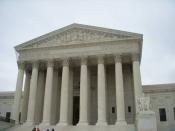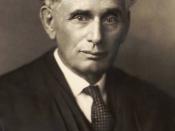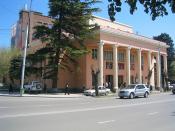Bridges v. California
Facts:
Bridges president of the union against whom the trial judge had ruled, published a copy of a telegram he had sent to the Secretary of Labor describing the judge's decision "outrageous" and suggested that if the decision was enforced, his union would call a strike and tie up the port of LA and involve the entire Pacific Coast.
He was found guilty of contempt of court.
Legal Standard:
"Clear and Present Danger"- that the substantive evil must be extremely serious and and the degree of imminence extremely high before utterances can be punished.
The substantive evil here is to be double:
1. Disrespect for the judiciary
2. Disorderly and unfair administration of justice
Questions:
Is it possible to say that the act in question could have threatened to change the nature of legal trials?
Should the judiciary be shielded from public criticism?
Dissenting Opinion: Free speech is not so absolute or irrational a conception as to imply paralysis of the means for effective protection of all the freedoms secured by the Bill of Rights.
To be punishable, a publication must refer to a matter under consideration and constitute, in effect a threat to its impartial disposition. It must be calculated to create an atmospheric pressure incompatible with rational, impartial adjudication. But to interfere with justice it need not succeed. The State should be able to proscribe attempts that fail because of the danger that attempts may succeed.
Cox v. Louisiana - Picketing Near a Courthouse
Facts:
The appellant led a demonstration of approximately 2,000 black students to protest the arrest of twenty-three black students who had picketed stores that maintained segregated lunch counters.
The demonstration took place at a local courthouse, which contained the parish jail where the arrested students were confined to.
The appellant was...


